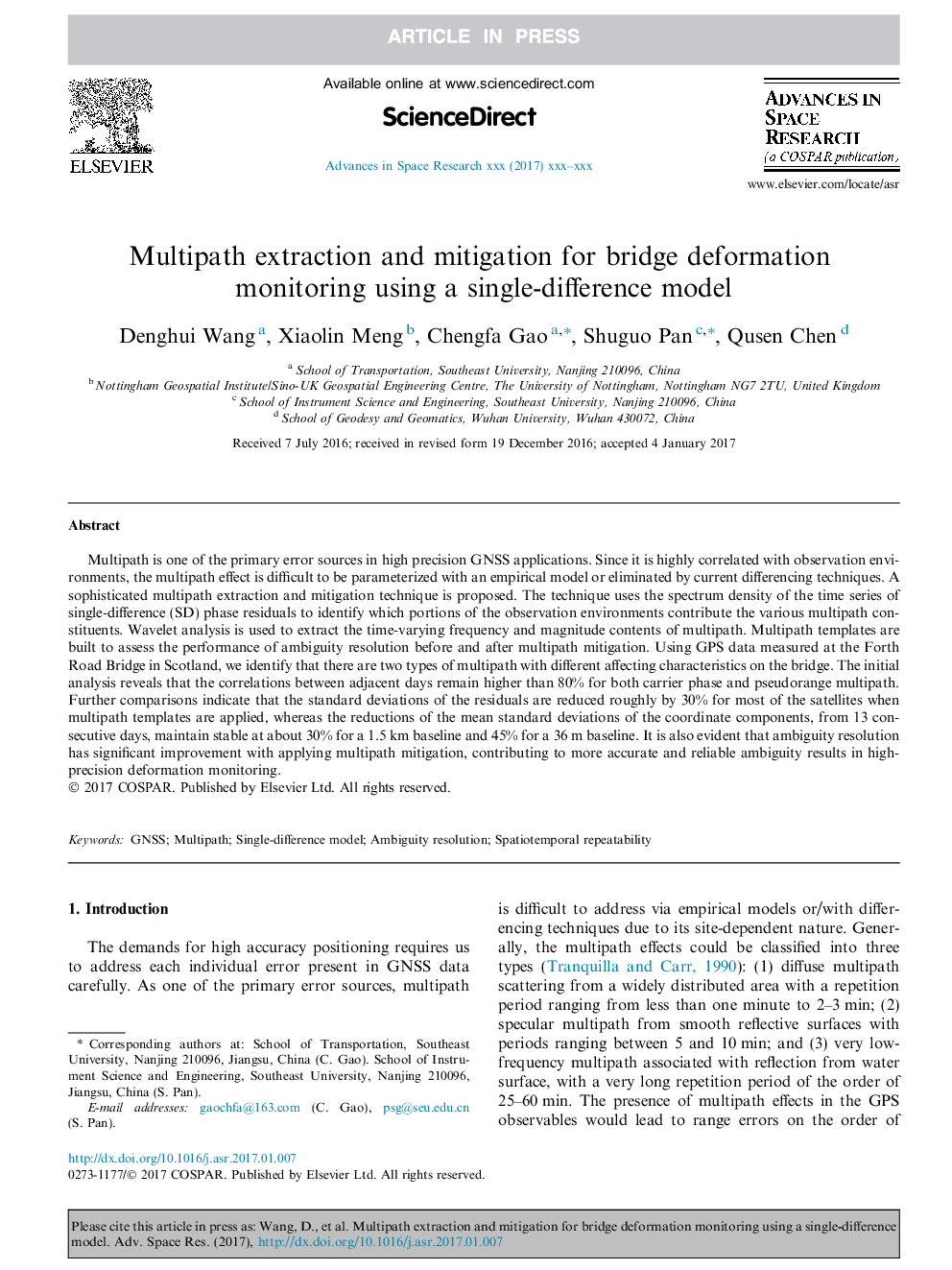| Article ID | Journal | Published Year | Pages | File Type |
|---|---|---|---|---|
| 8132577 | Advances in Space Research | 2017 | 14 Pages |
Abstract
Multipath is one of the primary error sources in high precision GNSS applications. Since it is highly correlated with observation environments, the multipath effect is difficult to be parameterized with an empirical model or eliminated by current differencing techniques. A sophisticated multipath extraction and mitigation technique is proposed. The technique uses the spectrum density of the time series of single-difference (SD) phase residuals to identify which portions of the observation environments contribute the various multipath constituents. Wavelet analysis is used to extract the time-varying frequency and magnitude contents of multipath. Multipath templates are built to assess the performance of ambiguity resolution before and after multipath mitigation. Using GPS data measured at the Forth Road Bridge in Scotland, we identify that there are two types of multipath with different affecting characteristics on the bridge. The initial analysis reveals that the correlations between adjacent days remain higher than 80% for both carrier phase and pseudorange multipath. Further comparisons indicate that the standard deviations of the residuals are reduced roughly by 30% for most of the satellites when multipath templates are applied, whereas the reductions of the mean standard deviations of the coordinate components, from 13 consecutive days, maintain stable at about 30% for a 1.5Â km baseline and 45% for a 36Â m baseline. It is also evident that ambiguity resolution has significant improvement with applying multipath mitigation, contributing to more accurate and reliable ambiguity results in high-precision deformation monitoring.
Keywords
Related Topics
Physical Sciences and Engineering
Earth and Planetary Sciences
Space and Planetary Science
Authors
Denghui Wang, Xiaolin Meng, Chengfa Gao, Shuguo Pan, Qusen Chen,
